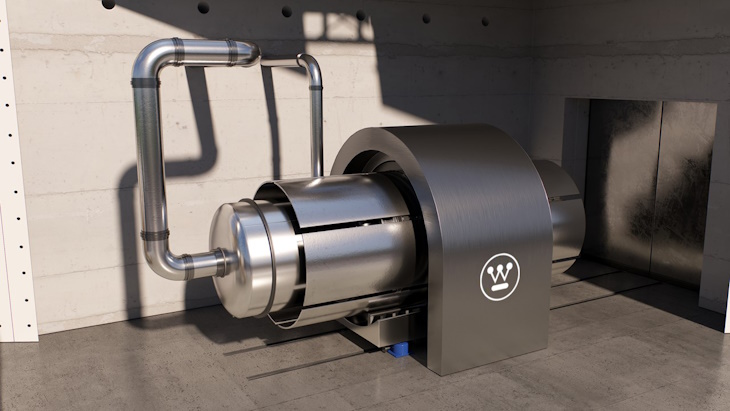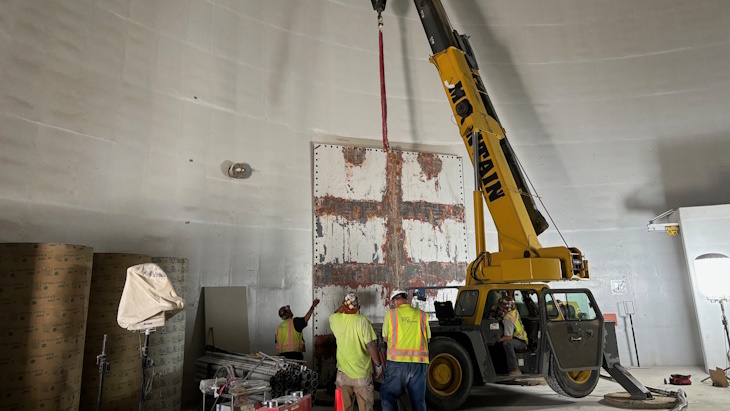
Westinghouse, Radiant, and Ultra Safe Nuclear were competitively selected last year to receive federal funding totalling USD3.9 billion to support them in the front-end engineering and experiment design - or FEEED - process in preparation for the testing of fuelled reactor experiments at NRIC's DOME test bed. Submission of the Preliminary Safety Design Report (PSDR) marks the company's completion of the FEEED process, which involves developing a detailed schedule, budget, design, and test plan for the experiment, as well as the detailed preliminary safety report on its design to ensure safe operations during testing.
The eVinci team will now develop the timeline for the End-to-End Reactor test programme at INL, and a Preliminary Documented Safety Analyses submission, which will be the third of four DOE submissions needed for the test reactor to be installed in the DOME.
The heatpipe-cooled eVinci microreactor is described by Westinghouse as a nuclear "battery" to provide versatile and scalable energy for applications such as providing electricity and heating for remote communities, universities, mining operations, industrial centres, data centres and defence facilities, and even on the Moon. Producing from "several kilowatts" to 5 MW of electricity, it can also produce high temperature heat suitable for industrial applications, including alternative fuel production, such as hydrogen, and has the flexibility to balance renewable output. The technology is factory-built and assembled before it is shipped in a container.
Jon Ball, president of eVinci Technologies at Westinghouse, said submission of the PSDR is a critical step to bringing the microreactor to commercial operation. "We are targeting deployment of multiple eVinci microreactors across the world by the end of the decade, and the strong and continued partnership with INL and the Department of Energy is instrumental to our efforts," he said.

Construction work at the DOME facility (Image: NRIC)
DOME - for Demonstration and Operation of Microreactor Experiments - is one of two historic facilities at Idaho National Lab that are being remodelled and retrofitted by NRIC to create test beds for advanced reactor technology. DOME's 80-foot-tall concrete and steel structure was built in the 1960s to house the Experimental Breeder Reactor-II which operated from 1964 until 1994. It is expected to be ready to begin testing in 2026. The other test bed, LOTUS (Laboratory for Operations and Testing in the US), will provide safety-significant confinement for reactors to go critical for the first time and is expected to be operational by late 2027.
"The completion of the PSDR for the eVinci test reactor is an important step towards enabling a microreactor developer to perform a test in our DOME facility," said Brad Tomer, acting director of NRIC. "As a national DOE program and part of INL, the nation’s nuclear energy research laboratory, NRIC is committed to working with private companies such as Westinghouse to perform testing and accelerate development of advanced nuclear technologies that will provide clean energy solutions for the US."